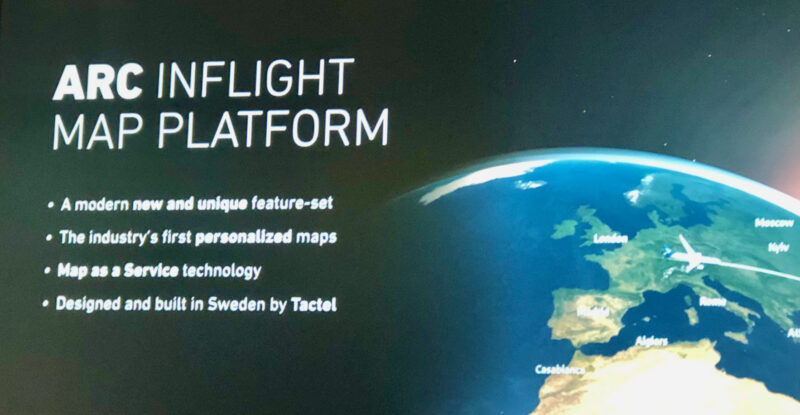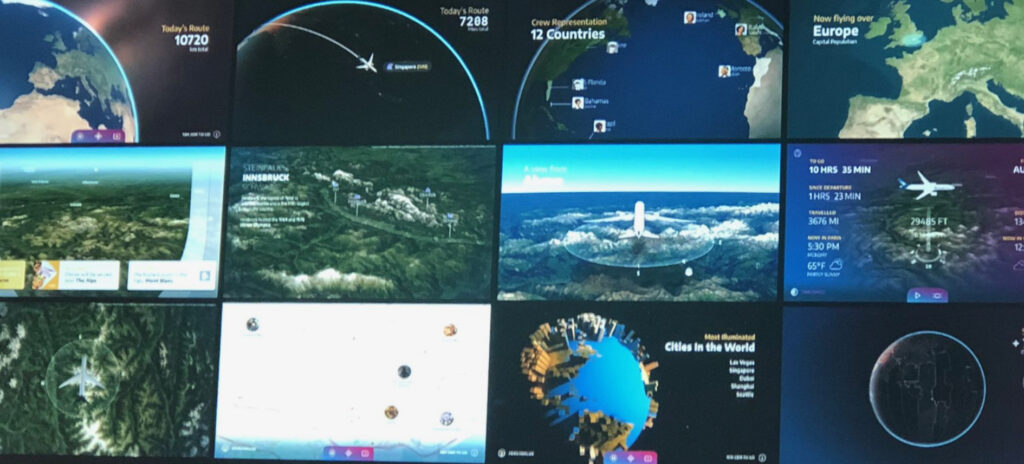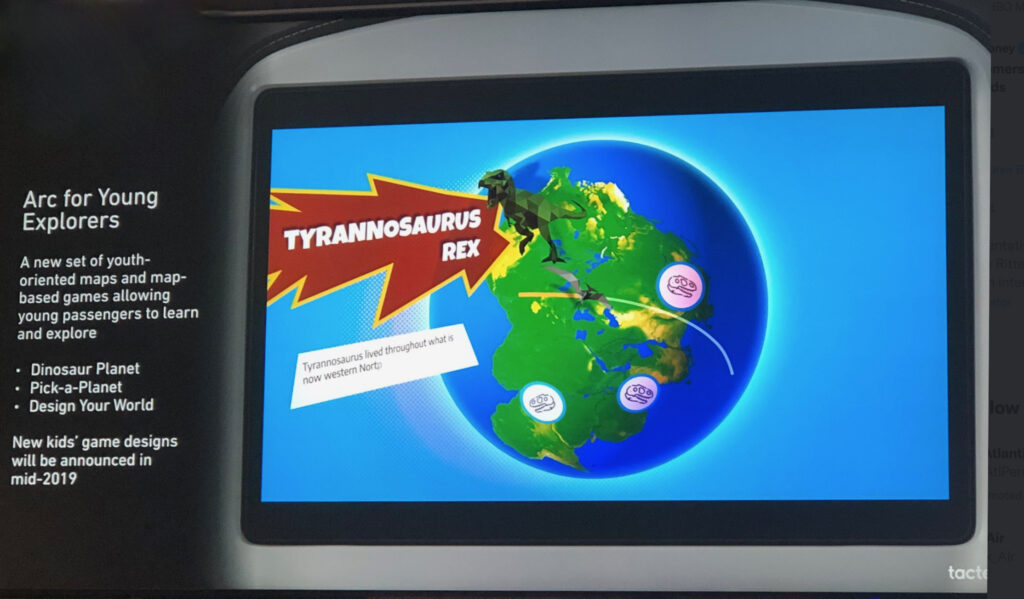Panasonic Avionics’ unveiling of its new Arc software at the Aircraft Interiors Expo in Hamburg was an attention-grabber, not least because it marked the inflight entertainment giant’s induction into a previously agnostic moving map space that has already enjoyed advancements as a result of the labor of companies like Flightpath3D and Collins Aerospace with its Airshow solution.
Management at Panasonic framed the development of Arc as being in concert with the growth of its new interactive platform and not meant to exclude the use of other moving map services. Airlines will still get to choose.
The stated design objectives for Arc are storytelling, air-to-ground retailing, and cross-platform interactive personalization.
The best way to explain the Arc design approach is probably to put it into consumer technology terms. Apple Maps is a core feature of iOS. Its data sets and features can be called up by any number of apps – native and third-party – in context, as needed. You can pop over to maps for directions after asking Siri for a nearby coffee shop. But you can still download Google Maps to any Apple device if you prefer their depth of information on points of interest, and detailed street views. The competition comes down to content and customer habits or preferences.
That’s what Arc aims to accomplish in-flight.
As Andrew Mohr, head of innovation at Panasonic explained at the reveal, Arc allows airlines to add map-based data to any number of the interactive features of Panasonic’s IFE systems. Maps and map functionality are no longer bound by the borders of a single app, but can spread to inform other IFE applications.
“It allows designers, creators and third parties to utilize our map engine in ways that have never been done before,” said Mohr.
At the reveal, we were teased by opportunities ranging from informative maps for trivia buffs that bring world statistics to life better than an Atlas, to a children’s map that can help them travel back in time to the age of dinosaurs and show the plane as a pterodactyl flying over the super-continent of Pangaea.
We saw an inflight game where passengers can fly over the land below. But that was just Panasonic flexing its content muscles and showing that it can offer a standalone map product that is expected to be as content-rich as competing inflight map apps. That assertion will no doubt be the catalyst for fresh map competition going forward.
Mohr presented Arc as an engine for a broader narrative. “We love the idea of the narrative Arc for travel; how the map can really play a strong role in telling the story of travel,” he said.
The Arc system can offer personalized flight map views that integrate other journey data. Will this trip get me to the next level in loyalty status? What other routes could I fly with this airline to get to me from silver to gold? What Michelin star restaurants are at my destination city, and can I book a table now? How about hotels? What monuments am I flying over – what’s their story?
“We have different ways of visualizing content on maps, so as we’re flying over Europe, for example, [we’re] showing population information, or any kind of statistic that we want to. There’s a window view [which] can bring in advertising or a flight line approach to show events – not just the name on the map but actually pop-up information that is relevant to that [location],” said Mohr.
Readers will no doubt think even further beyond this to personalized journey information. Oh, my bag didn’t make the flight – where exactly is it? Can I request delivery to my hotel now? Airlines could not only predict the time for arrival at your airport, but also, with aggregate data from partners, predict the time that you will arrive home.
Through partnerships with content providers, will Panasonic offer future map data integration with films and programming? What mountains was this dragon soaring over on Game of Thrones? Can I book a flight there?
Consumer technology advances will lead the way to some of these more ambitious aims, but it’s important to create the framework for those possibilities in-flight.
To tell the story of travel, the flight map must go beyond the aircraft and expand to the journey in both practical and abstract terms. Panasonic’s platform approach lays the foundation for countless innovations.
“We’ve been working on Arc for almost two years. The hard part of the development is actually done, and the next nine months leading up to entry-into-service will be focused on optimization, fine tuning,” Mohr said, “but really content development because content is really what brings a map to life.”
Related Articles:
- With ANA as 50th customer, FlightPath3D continues growth trajectory
- Rockwell Collins looks to bring the geo-magic to its moving maps
- Under Development: A new kind of moving map with live camera feed
- Airshow to Go: Why Gogo BizAv is offering popular moving map app
- Online merchandising in an offline world: FlightPath3D talks shop
All images credited to Mary Kirby













